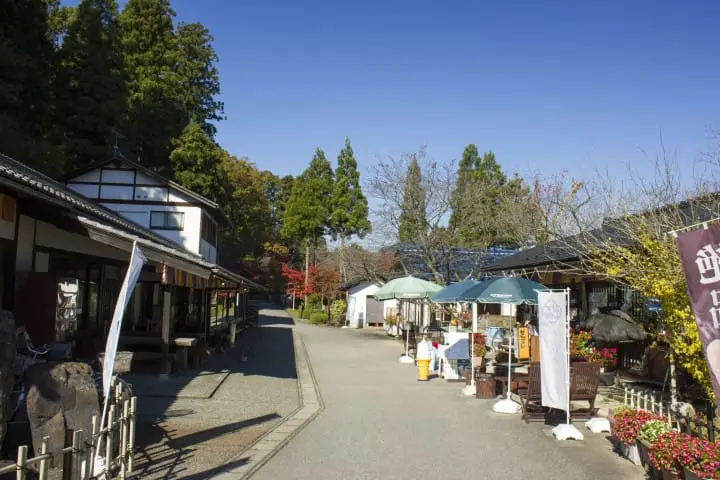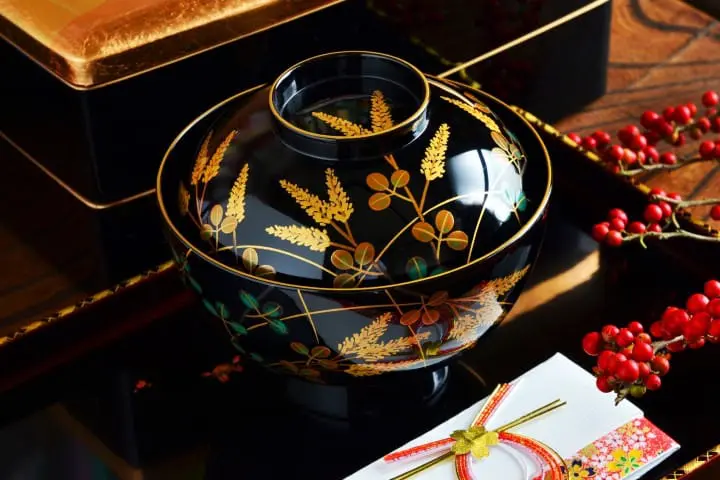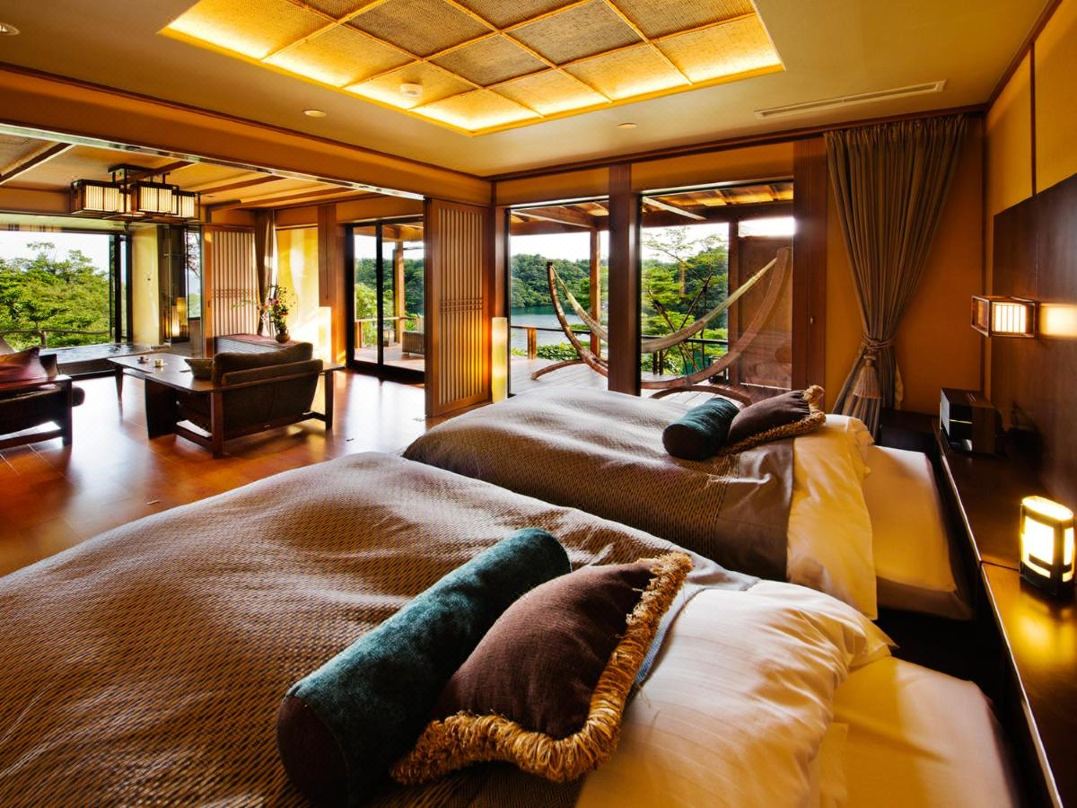Ishikawa Travel Guide: 14 Places to Visit, Fine Food, and Activities

Ishikawa Prefecture boasts traditional townscapes and a rich natural environment. Read on to learn about the fine cuisine, scenic places to visit, and cultural assets of Kanazawa, Noto, and Kaga Onsen in Ishikawa.
Ishikawa: Home to Scenic Kanazawa, Noto, and Kaga Onsen

Picture courtesy of Pixta
Ishikawa Prefecture is located in the Hokuriku Region. Following the debut of the Hokuriku Shinkansen, day trips from Tokyo to this prefecture have become popular.
Ishikawa is famous for its natural environment and culture, with a wide variety of sightseeing spots. It is also renowned for its fresh seafood, such as the crabs caught in the Japan Sea, and adorable Japanese confectionery.
Traditional craftwork, namely lacquerware and gold leaf, is produced in Wajima City. For those hoping to experience fine cuisine and Japanese culture, Ishikawa is the place to visit.
Ishikawa: Famous Places to Visit and Travel Tips
Kanazawa
1. Kenrokuen Garden
2. Higashi Chaya District
3. Ohmicho Market
4. Myoryuji Temple
Kaga
5. Kaga Onsen-kyo
6. Kaga Traditional Handicraft Village Yunokuni no Mori
7. Kakusenkei Gorge
Noto Peninsula
8. Chirihama Nagisa Driveway
9. Shiroyone Senmaida Terraced Rice Fields
10. Tsukumo Bay
11. Wakura Onsen
Hakusan
12. Hakusan Alpine Botanical Garden
13. Shirayama Hime Shrine
14. Tedori Gorge
Ishikawa Cuisine
Access: How to Get to Ishikawa's Famous Destinations
Various Regions in Ishikawa
Kanazawa
This is an area that prospered as a jokamachi (castle town) of the Kaga Clan. Various sightseeing spots such as Kenrokuen, one of the three major Japanese gardens, and Higashi Chaya District, which boasts a well-preserved traditional townscape, are located here. This is an area filled with must-visit spots where you can experience Japanese culture.
Kaga
This is a well-known area in the Hokuriku with nature-abundant hot spring (onsen) resorts. There are four hot spring towns (Yamashiro, Yamanaka, Katayamazu, and Awazu), and those who love bathing in an onsen should drop by this area. Visitors can also relax in the area surrounding the onsen facilities, which are brimming with natural beauty.
Noto Peninsula
With its well-preserved natural environment, the Noto Peninsula is full of picturesque sights which are reminiscent of ancient Japan. There are spots such as the Chirihama Nagisa Driveway and the Shiroyone Senmaida, where visitors can take in the view of the ocean and the hills. The local seafood from the Sea of Japan is also superb.
Hakusan
Hakusan (Mt. Haku), one of the three major mountains in Japan, is located in the southern region of Ishikawa Prefecture. It is also famous for its scenic landscapes naturally created by the mountain and alpine plants. Welcoming visitors from all around Japan, Shirayama Hime Shrine is located at the foot of Mt. Haku and is a popular "power spot" for matchmaking.
Kanazawa - Places to Visit in a Castle Town
The following is a list of recommended places to visit in Kanazawa.
1. Kenrokuen Garden

Picture courtesy of Pixta
When the Japanese think of Kanazawa, they imagine the scenery at Kenroku-en.
This is one of the three major Japanese gardens. It was built outside Kanazawa Castle by Maeda Tsunanori, the fifth lord of the Kaga Clan, during the Edo Period. It will take about one hour and a half to leisurely tour the vast garden.

Picture courtesy of Pixta
Visitors can enjoy a different scenery every season, such as the cherry blossoms in spring, irises in early summer, and the autumn leaves in fall. Yukitsuri, or "snow suspenders" used to protect the branches against heavy snow, can be seen during the winter.
Kenrokuen Garden
Hotels near Kenrokuen
2. Higashi Chaya District

Picture courtesy of Pixta
Those who want to view the traditional townscape should visit Higashi Chaya District. Buildings from the Edo Period are preserved in this district, creating a nostalgic atmosphere. Alongside cafes, there are stores handling Japanese confectionery and handicrafts lining the streets in this area. It might be fun to change into a rental kimono and take a stroll.
Higashi Chaya District
Hotels near Higashi Chaya District
3. Ohmicho Market

Picture courtesy of Pixta
Ohmicho Market opened during the Edo Period. It is a bustling fish market, regarded as the "Kitchen of the Kanazawa Citizen."
There are about 180 stores in this market that handle not only seafood from the Sea of Japan but also Kaga Yasai, a brand of vegetables produced in Kanazawa. Don't miss out on hearing the local residents using their regional dialect to negotiate the price with shopkeepers.
Drawing a large number of customers, some of the market restaurants serve kaisen-don. These are rice bowls topped with fresh seafood straight from the fishmonger.
Ohmicho Market
Hotels near Omicho Market
4. Myoryuji Temple

Picture courtesy of Pixta
Myoryuji is also known as the Ninja Temple. It is filled with many tricks such as a pitfall disguised as an offertory box, hidden staircases, a secret room behind a hanging scroll, and even an underground passage to Kanazawa Castle.
The legend goes that these tricks were devised during the Edo Period in case the hostile Tokugawa Shogunate invaded the Kaga Clan. The layout of the temple is so complicated that visitors will be lost without a guide. This is the perfect place to experience the feeling of a stealth ninja.
Myoryuji Temple
Hotels near Myoryuji Temple
*A reservation by telephone (+81-76-241-0888) is required to tour the temple. Be sure to ask a Japanese-speaking friend to make reservations.
↑ Return to the top of article.
Kaga - An Oasis for Hot Spring Lovers
The following is a list of popular places to visit in Kaga.
5. Kaga Onsen-kyo
Kaga Onsen-kyo consists of four hot spring districts—Yamashiro, Yamanaka, Katayamazu, and Awazu, respectively—each boasting its own unique appeal.

Kosoyu. Picture courtesy of Pixta
At Yamashiro Onsen, visitors can enjoy the retro atmosphere of the renovated public bathhouse Kosoyu, which was originally built in the Meiji Period.

Shibayamagata. Picture courtesy of Pixta
At Katayamazu Onsen, don't miss out on seeing Shibayamagata, a lagoon which is said to change its colors seven times a day.
Those who plan to tour Kaga Onsen-kyo should purchase the Canbus One-day Ticket, which allows users to get on and off the bus freely.
Kaga Onsen-kyo
*Canbus One-day Ticket: 1,000 yen/Two-day Ticket: 1,200 yen
The two-day ticket is valid for two consecutive days within a three-day period. Both prices are for adults.
6. Kaga Traditional Handicraft Village Yunokuni no Mori

Picture courtesy of Pixta
At Traditional Handicrafts Village Yunokuni no Mori, visitors can try their hands at various craftwork such as gold leaf pasting on lacquerware or stencil dyeing of the Kaga Yuzen kimono. There are more than fifty workshops related to the traditional craftwork of Ishikawa Prefecture to choose from.
The natural environment surrounding the site is another appeal of this facility. Be sure to check out the thatched roof of the old house, originally built in the Meiji Period, which presents a glimpse of the old Japan.
Kaga Traditional Handicraft Village Yunokuni no Mori
Hotels near Kaga Traditional Craft Village Yunokuni no Mori
Official website: https://yunokuni.jp/mori/?lang=en
7. Kakusenkei Gorge

Picture courtesy of Pixta
Kakusenkei Gorge, located near Yamanaka Onsen, offers a sprawling scenic view that is said to be the best in the Hokuriku Region. It stretches for approximately 1.3 kilometers and visitors can enjoy a different scenery each season. Kakusenkei is also known as a place to enjoy the autumn leaves.

Ayatori Bridge. Picture courtesy of Pixta
There are bridges to enjoy the view, such as the Korogi Bridge, which is made from hinoki (Japanese cypress), and the S-shaped Ayatori Bridge. Kakusenkei Kawadoko—a cafe located at the foot of Ayatori Bridge—is open from April to October, offering drinks and confectionery by the riverside.
Kakusenkei Gorge
Official website: http://visitkaga.com/places_of_interest/yamanaka/kakusenkei.php
↑ Return to the top of article.
Noto - Appreciating the Beauty of Nature
The following are recommended places to visit in Noto.
8. Chirihama Nagisa Driveway

Picture courtesy of Pixta
Chirihama Nagisa Driveway is the only road in Japan located on a sandy beach. Unlike other beaches, the fine grains of sand are packed tight by the seawater, which enables cars, motorbikes, and even bicycles to drive along the water's edge.
Some lucky visitors may be able to witness mystic views, such as the morning mist before sunrise or the sun setting on the horizon.
Chirihama Nagisa Driveway
Hotels near Chirihama Nagisa Driveway
Official website: https://www.hot-ishikawa.jp/spot/5818 (Japanese)
9. Shiroyone Senmaida

Photograph by Pixta
Shiroyone Senmaida offers a vast view of the rice paddies. With the Sea of Japan's contrasting blue in the background, this magnificent sight of 1,004 rice paddies—spread out on a steep hill dropping fifty meters down—can only be seen in Noto.
In the evening, the sunset is reflected on the rice paddies, which creates a fantastic view. Held during the winter, Aze no Kirameki (Senmaida Light Up) presents a gorgeous view of the illuminated rice paddies.
Shiroyone Senmaida
10. Tsukumo Bay

Picture courtesy of Pixta
Tsukumo means "99 inlets" in Japanese and the bay was named according to its topography. The beautiful contrast between the clear blue water and the green Horai Island is one of the reasons it was chosen as one of the "100 Landscapes of Japan."

Picture courtesy of Pixta
The calm, clear bay is inhabited by fish, such as the horse mackerel and black porgy, along with seaweed and various marine plants. Visitors can also ride an excursion boat and feed the fish.
Tsukumo Bay
Hotels near Tsukumo Bay
Official website: http://www.notocho.jp/lan/en/sightseeing-spot/tsukumo/
11. Wakura Onsen

Photo by Pixta
Wakura Onsen is located in Nanao, a city in the Noto Peninsula of Ishikawa. Believed to have a history of more than 1,200 years, it is a famous hot spring resort in Japan.
The local hot spring water contains sodium and calcium and is said to be good for rheumatism and nerve pain. The town faces the Sea of Japan, and its water has a high salt content that is characteristic of a seaside onsen.

The view from Yuttari Park in Wakura Onsen. Photo by Pixta
Wakura Onsen is famous for its flavorful rice, vegetables, local sake, Noto beef, and other specialties. At Nanao Harbor and Tomiyama Harbor, yellowtail, Kano crab, rockfish, anglerfish, and other kinds of seafood can be caught in front of your eyes. The town has plenty of sushi restaurants where visitors can enjoy the flavors of the Noto Peninsula.
One of the best places to stay in Wakura Onsen is the ryokan Kagaya, which has received several distinctions for the quality of its hospitality and cuisine.
Find accommodation in Wakura Onsen on Booking.com
↑ Return to the top of article.
Hakusan - Alpine Plants and Spiritual Spots
Don't miss the following places in the Hakusan Area.
12. Hakusan Alpine Botanical Garden

Picture courtesy of Pixta
Hakusan Alpine Botanical Garden is located at the foot of Hakusan (Mt. Haku), a famous mountain in the Hokuriku Region. The garden is open from June to July every year, displaying fifty types of plants totaling up to 100,000. Visitors can enjoy rare alpine plants such as the orange-colored daylily.
While most of the plants usually grow in higher altitude, tourists from all over Japan can gather at this botanical garden to enjoy the rare sight.
Hakusan Alpine Botanical Garden
13. Shirayama Hime Shrine

Picture courtesy of Pixta
Shirayama Hime Shrine, which regards Hakusan as a holy mountain, is called "Shirayama-san" by the local residents.
An 800-year old tree, which creates an awe-inspiring atmosphere, stands on the grounds. It is said that this shrine blesses visitors in many ways, such as in matchmaking. A large number of visitors gather from all over Japan on "Otsuitachi-mairi"—a visit to the shrine on the first day of each month.
Shirayama Hime Shrine
14. Tedori Gorge

Picture courtesy of Pixta
Tedori Gorge was created by the Tedori River, which runs through the southern Ishikawa region. This grand sight of stone walls are as high as twenty to thirty meters and stretch for eight kilometers.
Visitors can edge close to Watagataki Falls, a waterfall rising to the height of 32 meters, and even feel the spray of water. In the summertime, the temperature in the gorge is lower than its surroundings, so a stroll on a hot day can be quite refreshing.
Tedori Gorge
Official website: http://www.city.hakusan.lg.jp/otherdata/sightseeing/sightseeing/area_hakusan/index.html
↑ Return to the top of article.
Ishikawa Cuisine - Three Dishes that You Shouldn't Miss
We introduce some of the dishes that you should try when visiting Ishikawa.
Crab

Picture courtesy of Pixta
Visitors should try the Kanou-gani and Kohbako-gani. They are both snow crabs caught near the shores of Ishikawa, and when the male crab has grown to a certain size it is called Kanou-gani.
Kanou-gani is famous for its firm texture. The female snow crab is called Kohbako-gani, which is well-known for its roe. The crab season starts annually from November 6 and ends around March 20.
Jibuni

Picture courtesy of Pixta
Jibuni is one of the local cuisine called Kaga Ryori. Chicken, sprinkled with flour, is stewed with lily bulbs and served alongside wasabi (Japanese horseradish).

Picture courtesy of Pixta
Kaga-ryori (Kaga cuisine) is served in the traditional craftwork vessels of Ishikawa, such as Wajima lacquerware and Kutani ware, which make it more appealing to the eye. Kagaya Kanazawa Store, located in Kanazawa Station, serves a Kaga-ryori lunch which includes jibuni at a moderate price of 1,500 to 2,000 yen (including tax).
Kanazawa Confectionery

Kintsuba. Picture courtesy of Pixta
As tea ceremony prospered in Kanazawa, confection served with tea flourished as well. The Kanazawa confectionery is sweeter than those in other areas and has a touch of extravagance.
Kintsuba (*1), made by Nakataya, and jiro-ame, made by Tawaraya—the oldest confection maker in Kanazawa—are some of the most notable traditional sweets. They all make great souvenirs, too!
*1 Kintsuba: A confection of sweetened beans wrapped in a wheat-flour skin.
↑ Return to the top of article.
How to Get to Ishikawa's Major Destinations

Picture courtesy of Pixta
The following is the list of routes from Tokyo to Kanazawa, and further on to Kaga Onsenkyo and Noto.
From Tokyo to Kanazawa (Express Bus/Shinkansen)
It will take about eight to nine hours on the express bus. On weekdays, the fare varies from 3,000 to 10,000 yen.
The one-way Shinkansen fare from Tokyo Station to Kanazawa Station is 14,120 yen for a reserved seat and 13,600 yen for a non-reserved seat. The ride takes about two and a half hours, which makes it possible for a day trip.
Hokuriku Arch Pass
Those planning to tour the Hokuriku Region for a week should use the Hokuriku Arch Pass. The fare is approximately 25,000 yen, and the seven-day pass allows unlimited rides on the Hokuriku Shinkansen and various express trains from Kansai, Narita and Haneda Airports.
Please note that the fare differs slightly according to the place of purchase.
A. Online Purchase (before entering Japan)
Adults (over 12 years of age): 24,000 yen
Children (between 6 to 11 years old): 12,000 yen
B. Purchase after entering Japan
Adults: 25,000 yen; Children: 12,500 yen
From Kanazawa to Kaga Onsenkyo by Train
Take the JR Hokuriku Main Line from Kanazawa Station. The one-way fare is 760 yen and the ride takes about an hour.
A faster way to travel will be to use the JR Limited Express Shirasagi. The one-way fare is 1,510 yen and the ride takes about thirty minutes.
From Kanazawa to Noto-Nakajima by Train
Take the IR Ishikawa Railway's Limited Express Noto Kagaribi from Kanazawa Station to Wakura Onsen Station, and ride the Nanao Line along the Noto Railway to Noto-Nakajima Station. The one-way fare is 2,600 yen and takes an hour and 45 minutes.
From Kanazawa to Hakusan by Bus
Take the Hakusan Tozan Bus from Kanazawa Station to Betto Deai, where the trailhead is located. The ride takes about two hours and the one-way fare is 2,200 yen.
↑ Return to the top of article.
Enjoy a Professional Photo Shoot Wearing a Kimono!
Capture My Japan is an on-location photography service tailored for international travelers visiting Japan. With bases located nationwide, we offer English-speaking photography services in various regions such as Tokyo, Kyoto, and Osaka.
Also, a new plan has been released by Capture My Japan and VASARA, Japan's largest kimono rental store, offering customers the opportunity to rent kimonos or yukatas for photo shoots. The package includes both the photography session and kimono rental along with professional hairstyling services. This option is particularly recommended for those who wish to capture memories in kimonos against traditional Japanese scenery.
Why not immortalize your precious memories in Japan with Capture My Japan? When applying, use the coupon code MATCHA-7545 to enjoy a 5% discount on your photo shoot!
Read also
Visit Ishikawa, a Land Brimming with History and Nature!
Ishikawa is a treasure trove of historic spots alongside places where you can observe majestic nature. If you have a chance to visit the Hokuriku region, definitely don't miss out on checking out Ishikawa!
This is the official account of MATCHA's editorial department. Our articles feature useful travel information for visitors to Japan, from how-to guides to recommended places to visit.






























![Izakaya Fuwari [居酒屋 風和利]](https://resources.matcha-jp.com/resize/720x2000/2024/10/11-202049.webp)


































![[Just a short distance from Nagoya] Popular Taiwanese YouTuber Alan tours Aichi, Tokoname!](https://resources.matcha-jp.com/resize/720x2000/2026/01/08-255181.webp)

